
|
In the conversations we had with many people while researching companies and fiberglass products, trying to find the best-made body panels for our Project Tacoma, the name Glassworks Unlimited out of Huntington Beach, CA kept coming up. We can confirm that they're turning out some of the best fitting, well-finished, and most durable fiberglass replacement body panels currently available. On top of that, the styles fit and complement the bodylines of the trucks they are designed for.
FRONT FENDER INSTALLATION
The front fenders we installed have 4.5" of flare, and the wheel opening is cut 3" higher than stock. Glassworks also offers a less aggressive, 3.5" flared model for stock-width trucks that just want to cover larger tires. The front glass a bolt-on replacement for the stock sheet metal, only requiring a few mounting holes to be drilled in the new fenders. The installation can be completed in about 2-3 hours with basic tools and no additional parts or hardware are required. The installation is so straightforward that we'll fly through it here without having to show you how to turn the wrenches.
Remove the plastic inner fender liners by unscrewing the assorted sheet metal screws that holds it in place and pull out the plastic snap-in retainers with pliers or by hand. A couple of good pulls will actually take the whole thing out pretty easily, and those clips do not need to be reused. Discard the inner fender liner.
| Test fit the Glassworks fender, marking where the three holes need to be drilled in the fender along the hood line. Make sure to check the fender - hood gap as well as the fender - door gap. Remove the fender again and drill small pilot holes where marked. Re-fit the fender to verify that they are placed correctly and then drill out the holes to 5/16". | |
| Reinstall the stock hardware to firmly secure the fender and then move on to marking and drilling the other holes in the same fashion. Reinstall the stock hardware. Note that some of the holes may need to be drilled slightly oversized or slotted to allow for the fender to be shifted and positioned while installing. This is typical. Reinstall the front grill detail and the corner light. Finally, reinstall the front bumper. | |
BEDSIDE INSTALLATION
In the rear, the steel bedsides do not even have adequate clearance for stock width axles with tires larger than 31", making it impossible to use the extra compression travel that aftermarket leaf springs and long travel shocks can provide. In order to use all of the 18" of suspension travel that our new rear suspension will cycle, we had to first make room for the tires. The Glassworks bedsides we installed feature a 4" flare and also have a 3" higher cut wheel well opening to match the front. Installing fiberglass bedsides is much more involved than the front fender installation. Expect the complete installation to take the better part of an eight hour day, because the bed must be removed from the truck and pulling off the stock sheet metal is fairly time consuming. This is mainly due to the fact that the bedsides are spot-welded onto the bed instead of being bolted on like the front fenders. Installing new bedsides should be considered a semi-permanent modification because the stock sheet metal cannot be easily reattached after it has been cut from the truck. The improved suspension performance that the bedsides complement was enough to convince us it was worth it.
Remove the taillight via the four Philips head screws, disconnect the wiring at the light and remove the taillight assembly. Feed the electrical wires down through the taillight holes and remove the plastic fasteners from the bed so that the wiring harness is not attached to the bed of the truck at any point. Disconnect the electrical connections to the license plate lights. Remove the tailgate and the tailgate hardware from the bed. The tailgate can be reused with the new bedsides if desired. Either way, the hardware can be reused to fasten the tailgate edge of the new fenders. Don't forget to open the gas filler door and remove the gas cap just as if you were going to fill the tank. The gas filler is not actually bolted to the bed, so no further disassembly is required. Remove the four bolts and two nuts that secure the bed to the frame rails and then transfer the bed off of the truck onto a stable, elevated work surface. The bed is easily light enough for two grown men to handle. Take care to lift it free of things like the gas filler. The beside can be placed on anything like blocks of wood or used tires, etc. to create a work surface that will not require the low-hanging wheel openings of the sheet metal to support the weight of the bed.
| There are two spot-welds inside the taillight housing that are easy to miss. Remove these and all of the spot-welds along the tailgate edge. The bed must be stood on it's front end or turned upside down in order to access the bottom three spot-welds at the rear of the bed, below the taillight. | |
| Trim the upper rear corner as shown in the image on the left and remove the lower rear brace by drilling out the spot-welds as shown in the image on the right. | |
| There are three holes in the bed rail that are raised and provide a level surface to mount the fender. These holes are marked and shown in the next two images. There is also one existing hole in the front edge of the inner bedside. With the fiberglass installed transfer these marks with a pen or paint to the fiberglass. | |
| Remove the bedside one last time and drill the mounting holes where the pen/paint marks were made using the inner bedside as a template. In both images you can see the pen marks where mounting holes will be drilled. Drill the pilot holes from the inside - out where the marks indicate. Then drill the 5/16" holes from the outside - in so in order to avoid cracking the gel-coat. Note the quality of the mold and smooth pattern of the matte that is laid visible on the inside of this bedside. | |
Primer/paint the drilled holes and cut edges of the inner sheet metal and body before permanently mounting the bedside. Cut sheet metal and drilled holes are quick to rust without protection from the elements. We used a red oxide primer because it's durable and will not be visible on the completed vehicle.
Drill one 1/4" hole through the stock rivet hole in lower rear support bracket, just below the taillight. Install 1/4" hardware. Also drill the fiberglass bedside support flange at the front of wheel well opening and mount to stock support bracket reusing the stock bolt.
Reinstall the bed on truck, taking care not to damage the gas filler lines or pinch the wiring harness between the bed and frame. Secure the six nuts and bolts after centering the bed on the frame mounts. Reconnect the wiring harness and reinstall the taillights, drilling pilot holes for the self-tapping screws to thread into, using the taillight assembly as a template.
| The completed installation shows how well the bedsides fit and cover the 33" x 10.5" tires. The rear bedsides look like they will cover any 33-35" tires up to 12.5" wide on 8" rims with no less than 3.5" backspacing. The completed truck is looking pretty patchwork at the moment, but the lines are good and a paint job is coming soon. Until you do paint glass, acetone is great to clean greasy handprints off of the gel-coat. | |
Contact Information: |
Glassworks Unlimited
5382 Oceanus Drive, Unit A
Huntington Beach, CA 92649
Telephone: 866.817.7828
www.glassworksunlimited.com
gwork@prodigy.net

|
Kartek Off-Road
909.737.7223
www.kartek.com
offroad@kartek.com
Talk about our Tacoma Project in the
Tacoma BBS
Send us
Email about Project Tacoma

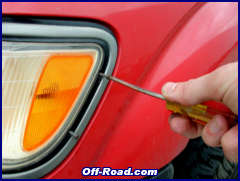
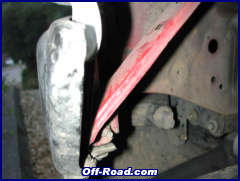
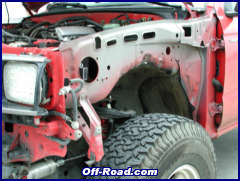
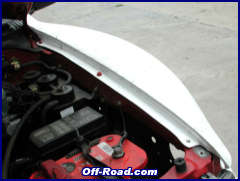
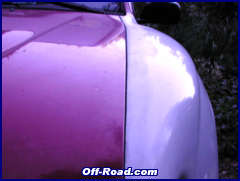
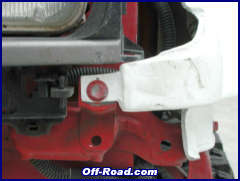
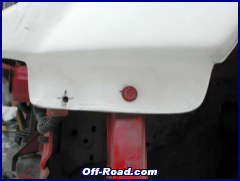
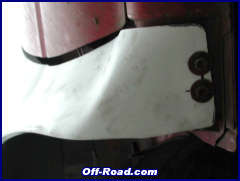
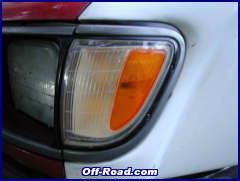
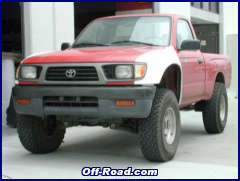
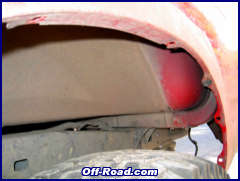
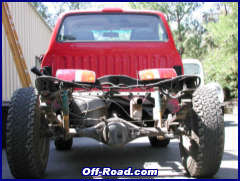
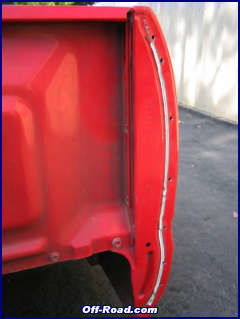
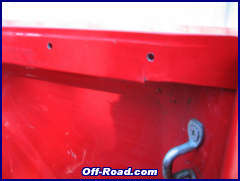
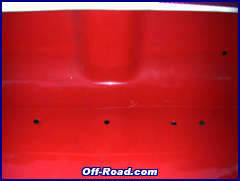
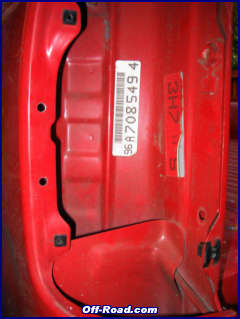
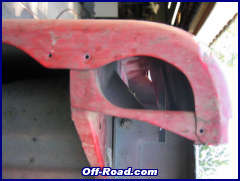
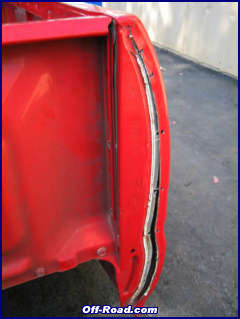
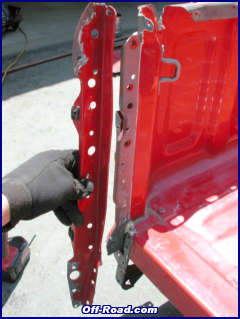
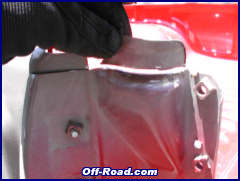
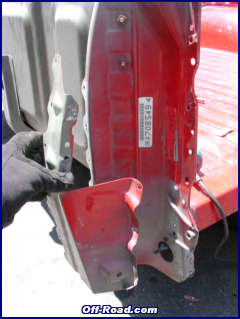
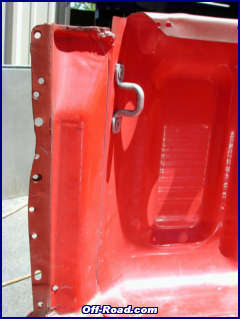
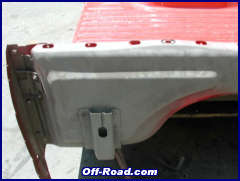
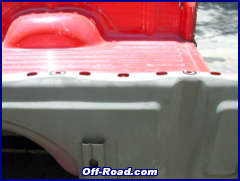
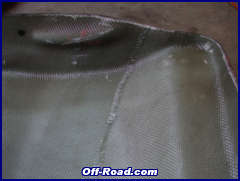
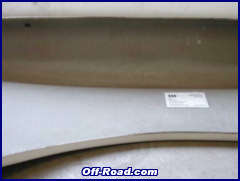
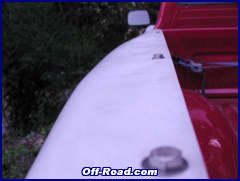
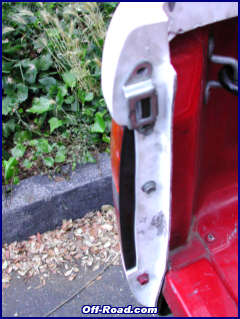
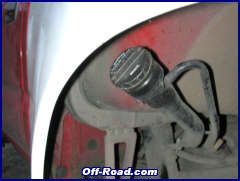
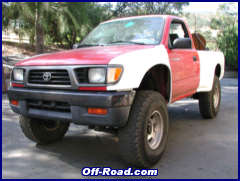
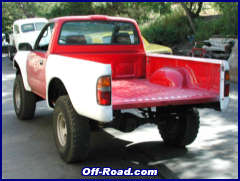

 Your Privacy Choices
Your Privacy Choices